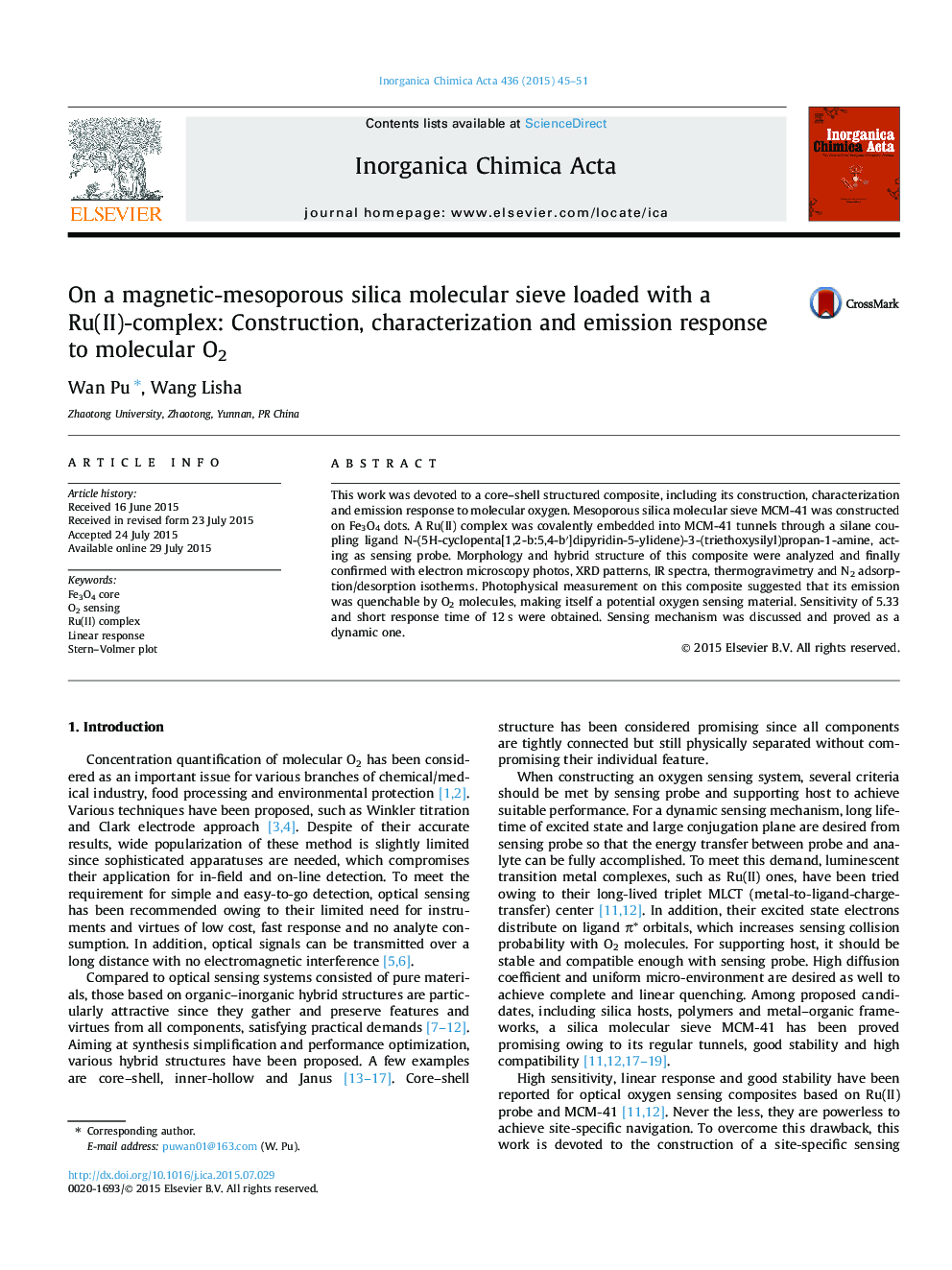| Article ID | Journal | Published Year | Pages | File Type |
|---|---|---|---|---|
| 1307625 | Inorganica Chimica Acta | 2015 | 7 Pages |
•A core–shell structured composite was designed with a site specific component.•A Ru(II) complex was covalently grafted, served as oxygen sensing probe.•Sensing mechanism was proved as a dynamic one.•Sensitivity of 5.33 and short response time of 12 s were obtained.
This work was devoted to a core–shell structured composite, including its construction, characterization and emission response to molecular oxygen. Mesoporous silica molecular sieve MCM-41 was constructed on Fe3O4 dots. A Ru(II) complex was covalently embedded into MCM-41 tunnels through a silane coupling ligand N-(5H-cyclopenta[1,2-b:5,4-b′]dipyridin-5-ylidene)-3-(triethoxysilyl)propan-1-amine, acting as sensing probe. Morphology and hybrid structure of this composite were analyzed and finally confirmed with electron microscopy photos, XRD patterns, IR spectra, thermogravimetry and N2 adsorption/desorption isotherms. Photophysical measurement on this composite suggested that its emission was quenchable by O2 molecules, making itself a potential oxygen sensing material. Sensitivity of 5.33 and short response time of 12 s were obtained. Sensing mechanism was discussed and proved as a dynamic one.
Graphical abstractA core–shell structured composite was constructed for oxygen sensing with Fe3O4 particles as core, MCM-41 as shell and a Ru(II) complex as probe. Sensitivity of 5.33 and short response time of 12 s were obtained, with site-specific guiding feature.Figure optionsDownload full-size imageDownload as PowerPoint slide
